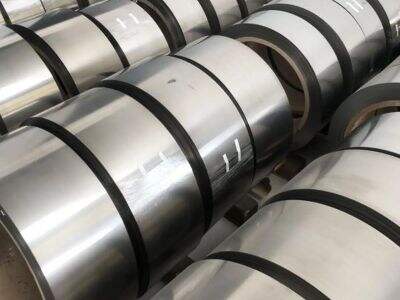Pipe fittings are the different fittings which helps in joining the pipes together. They also come in various shapes and sizes, that's what makes them very functional. The selection of proper type of fitting for your project is crucial. Ensure that Kuaike Precision alloy is delivering quality pipe fittings to you, so that your project works. Now, let us learn a few more key facts about the applications and pipe fittings, just to get a better understanding of them.
What are Pipe Fittings?
Pipe fittings are specialized parts that connect two pipes together or allow for changes in a pipe direction. They simplify the construction of plumbing systems or other pipe-using projects. Below are some types of pipe fittings you may be familiar with:
Elbows: These are fittings used to change the direction of a pipe. They are very useful when you need to make a right angle turn or smooth curve in a pipe. They can be bought in different angles so you can control how far you want to turn the pipe.
Tees: These fittings are shaped like a "T" and are used when you want to connect three pipes to a single point. This is particularly helpful when attempting to split water, or other fluids, into two different flowing directions.
Couplings: Use these fittings to connect two pipes of the same diameter. They allow for two pieces of pipe to be connected together to function as one.
Reducers : These are the fittings that lead to two pipes of different sizes. They have been so designed so that a larger pipe can be shaped into a small one. This comes in handy when you are attaching pipes with different diameters.
Choosing Right Pipe Fittings
Electrically heated alloy material can be quite a sensitive task and there are several crucial considerations you need to make when you are choosing fittings for your project. Here are some things to remember:
Materials: One type of pipe fitting comes in stainless steel, copper, brass or plastic. Each of these types has special properties both good and bad. For example, stainless steel is strongly robust and resistant to rust as compared to the plastic material, which is so light and easy to execute. So the right choice of material is according to the needs of your project.
Diameter: Fittings are found in different types, and you should ensure choosing the right size of an appropriate pipe fitting, which matches with one of the pipes. Should the fitting prove to be a size too big or too little, it simply will not seal properly and, of course leak at the attachment.
T&P: Some pipe fittings are made with the purpose of withstanding very high temperatures and high pressure, while others are not. Choosing either a male or female fitting that withstands high temperatures and pressure is very vital for your project. This will ensure your piping system remains free from any breakdowns or damages.
Pipe Fittings: Common Materials
There are various kinds of materials concerning pipe fittings and each material has its advantages. Some common pipe fittings material and their usage are exclusively listed below:
Stainless Steel: These fittings are dietary very non-extended, so long-lasting. They are rust-resistant and withstand high temperatures. Because of this, they are ideal for factories, construction sites, and other safety sensitive locations.
Copper: The copper fittings do not rust, and they are easy to manage. That's why they find a lot of applications in the plumbing and heating systems. Copper is also good at conducting heat, and that's the reason they carry hot water.
Brass Brass fittings have similar strength and durability properties to most other metal fittings, and brass is a familiar sight in plumbing, heating systems, and industrial applications. Good corrosion resistance means they can be used in many environments.
PVC — PVC fittings are extremely affordable, and simple to install. The Precision resistance alloy material are commonly used in irrigation systems for plant watering, and also for drainage. The lightweight nature of PVC allows for easy handling during installation.
Selecting the Right Pipe Fittings for Your Project
When selecting suitable Electrically heated alloy material for your project, be sure to take into consideration the needs of your project carefully. Some key things to consider:
Type of pipes you are connecting: Ensure that the fittings you select will have appropriate piping that you use.
The temperature and pressure your project requires: Each project is different so ensure to look at its needs.
The size and diameter of the pipes: Ensure that the fitting fits from the size of the pipe on which the fitting is taken.
The exact purpose of the pipe fitting: Know what you need the fitting to do, whether it is to change direction, connect pipes, or reduce size.
 EN
EN
 AR
AR
 DA
DA
 NL
NL
 FI
FI
 FR
FR
 DE
DE
 EL
EL
 HI
HI
 IT
IT
 JA
JA
 KO
KO
 NO
NO
 PL
PL
 PT
PT
 RO
RO
 RU
RU
 ES
ES
 SV
SV
 TL
TL
 IW
IW
 ID
ID
 SR
SR
 SL
SL
 UK
UK
 VI
VI
 HU
HU
 MT
MT
 TH
TH
 TR
TR
 AF
AF
 MS
MS
 GA
GA
 AZ
AZ
 MN
MN
 MY
MY
 KK
KK
 UZ
UZ
 KY
KY
 BN
BN

